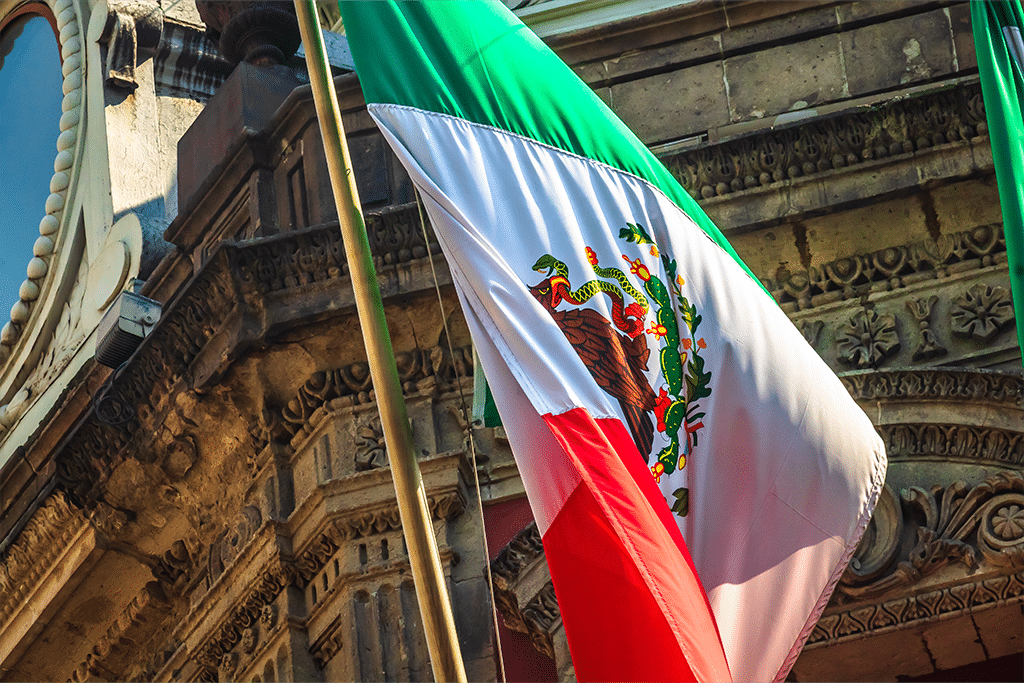Dual Citizenship in Mexico: Understanding the Tax Implications

Dual Citizenship in Mexico: How to Apply and What to Know
Are you living in Mexico and curious about becoming a citizen? Or maybe you’re considering retiring there? Regardless, there are plenty of benefits to dual citizenship with Mexico.
Citizens can skip the international immigration line at the airport, don’t pay tourist fees to cross the border, can vote, and even enjoy a stronger passport than Americans in certain countries. Plus, if you have a Mexican family or cultural heritage, becoming a citizen can be identity-affirming.
This guide covers qualification requirements, the application process, and practical tips for ensuring a smooth experience.
¡Vamos!
Key Takeaways
- Mexico and the United States allow dual citizenship without restriction.
- You can become a Mexican citizen by being born to Mexican parents, naturalization, or birthright.
- Citizenship conferred by Mexican parents can be applied for at any time. Read on for an overview of the process, or see here for detailed instructions from the Mexican government.
- You can apply to be naturalized after living in Mexico for five years or, under certain circumstances, two. Read on for an overview of the process, or see here for detailed instructions from the Mexican government.
- American expats still have to file taxes with the IRS, even if they’re not living in the US. Once you’re settled in Mexico, remember us – Greenback Expat Tax Services – we’ll make sure your expat taxes are done right.

Are You Ready to Move Abroad?
Choose the answer to each question that best describes you or your current situation, and learn how ready you are to start a life abroad.
Are You Ready to Move Abroad?
"*" indicates required fields

You have an adventurous spirit but you may need to prepare a bit more to ensure a smooth transition abroad. Consider researching more about the cultural, legal, and financial aspects of living overseas. Check out our guide 25 Thing Every Expat Should Know
You’re on the right track. You’ve started to think about what life abroad will entail. Keep building on your preparations to avoid any surprises once you’ve moved. Check out our guide 25 Thing Every Expat Should Know
You’re ready to move abroad! You seem well-prepared and have done your homework! You’re ready to embrace the expat life with confidence. Check out our guide 25 Thing Every Expat Should Know
Who Is Eligible for Dual Citizenship in Mexico?
Some countries don’t allow dual citizenship, but the US and Mexico do. The most common path to citizenship is based on your birthplace or parents. However, there’s also a naturalization path for foreigners without these connections.
Naturalization
The first step to naturalization is legally living in Mexico. Tourist and student visas don’t count; you must hold a temporary residence or work permit.
If you’re married to a Mexican citizen, have a Mexican child, or were born in a Latin American country or the Iberian peninsula, you can qualify after two years of residency. Otherwise, the minimum residency requirement is five.
We’ll provide more details below, but generally, the application process requires documentation, a Mexican history and language test, and proof that you have ties to the community.
Tourist and student visas don’t count toward naturalization residency requirements.
Citizenship by Descent
If your parents are Mexican citizens, you qualify for citizenship regardless of where you were born. You’re technically already a citizen; the Mexican government just doesn’t know about you. We’ll detail the process below, but in general, applying simply requires you to prove who you and your parents are.
Unfortunately, citizenship by descent does not include grandparents. In other words, if neither of your parents are Mexican citizens, you have to be naturalized like anyone else.
Citizenship by Birthplace
If you were born in Mexico, you’re automatically a Mexican citizen, even if you acquired a second nationality afterward. However, people are sometimes born in Mexico, grow up elsewhere, and don’t travel with their official citizenship documentation.
If you’re having trouble proving your Mexican citizenship, see here to search the government database of birth certificates. Should your birth not be registered, consider contacting an attorney for help – you will likely need to petition the court to recognize your birth.
Benefits of Dual Citizenship
One of the most significant perks of dual citizenship is how easy it is to travel between Mexico and the US. You can skip the long international arrival lines at both airports, avoid fees Mexico charges tourists, and don’t have to worry about renewing visas.
Foreign nationals face restrictions when buying property near Mexico’s coast or international borders, but dual citizens aren’t subject to these limitations. You can purchase or inherit property anywhere in the country. If you’re an investor or considering retiring in Mexico, you’ll have more flexibility to own real estate in prime locations, including sought-after areas like Cancun, Playa del Carmen, and Cabo San Lucas.
Dual citizens also enjoy improved access to public healthcare, education, and retirement benefits. For many, this can reduce living costs and improve quality of life.
You’ve probably noticed that finding work is more difficult if you need an employment permit. Dual citizenship also allows you to work without restriction, making companies more likely to hire you. Plus, establishing a business comes with fewer bureaucratic challenges for citizens.
Unlike foreigners, dual citizens can vote or run for public office. For those with strong community connections, this can be an opportunity to get involved and shape the country’s future.
Moreover, Mexican citizens enjoy visa-free or visa-on-arrival access to over 150 countries. The American passport also covers most of these, but this may change in the future; it can’t hurt to have expanded global travel options.
Dual Citizenship Application Process
Immigrating anywhere can feel overwhelming, and it’s almost impossible to escape the thought: “What if I missed something? What if they reject me?” So, let’s put some of that anxiety to rest.
First, you can visit your local Mexican consulate before your official appointment and ask them to review your documents. You don’t need an appointment; just walk in. Secondly, if your application is rejected because of a clerical error, the consequences are minor; just correct the issue and reapply.
With that said, let’s look at the requirements.
Naturalization for Foreigners
This process applies to anyone born outside of Mexico to non-Mexican parents.
Step 1: Satisfy Residency Requirements
The base requirement is to legally live in Mexico with a temporary or permanent visa for at least five years. You cannot get a visa in Mexico; you must do so at a consulate outside the country. During this time, you must spend the majority of any given year.
Under the following circumstances, you qualify for naturalization after only two years:
- You have a Mexican child.
- You’re from a Latin American country or the Iberian Peninsula.
- You have a Mexican spouse and have been married to them for at least two years.
Step 2: Gather Your Documents
If you’re using a special naturalization condition allowing you to apply after two years, see here for a list of required documents. They will be slightly different than the base requirements listed below.
- The completed formal application, downloadable here.
- The original and two copies of your Mexican residency card, valid for at least six months after your application and issued two or five years before your application date, depending on your required length of stay.
- The original and two copies of your long-form birth certificate; a long-form birth certificate will include information about your parents while the short-form does not.
- The original and two complete copies of your passport.
- A completed form indicating entry and exit dates for the two years prior to your application. You cannot spend more than six months out of the country during this period.
- Certificate indicating that you have no criminal record issued by a federal and local authority, as well as copies of each.
- Two passport-size color photographs (4.5 x 3.5 cm) on a white background, where you are facing forward, without glasses, and head uncovered.
- Two copies of your Clave Única de Registro de Población (CURP), which translates to “unique population registry code” and is the Mexican equivalent of a social security number.
- The original and a copy, of your application payment receipt. The price, as of January 2025, is 8,755 Mexican Pesos.
Step 3: Make Your Appointment
Once you’ve gathered your documents, it’s time to set a date. Use the official Secretary of Exterior Relations online platform to request an appointment.
In addition to Mexico City, you can choose from among a few other locations to attend your meeting. See here for a list of options and addresses.
Step 4: Take the Language and History Tests
Assuming your documents are approved, you’ll also take your language and history tests on the day of your appointment.
The history test has ten questions. To pass, you need to answer at least eight correctly. The language test consists of a brief interview, reading comprehension, and writing tests.
You have two attempts to pass these exams. If you fail the first, you must wait fifteen days before making an appointment to try again. If you fail the second attempt, you must wait one year before trying again.
The Mexicanizame app is a great study aid for the history test. It contains all the questions you may be asked.
Step 5: You’re a Citizen! Now You Can Apply for a Passport
Within three months of your appointment date, you should receive a response indicating whether or not your citizenship application was approved. If so, congratulations!
You can request a passport appointment using the same online platform you used for naturalization. You’ll need to bring:
- Your naturalization letter
- A valid photo ID
- Two passport-sized color photos (4.5 x 3.5 cm)
- Completed Form OP-5, application for a Mexican passport
Dual Citizenship for Children With Mexican Parents
If you have Mexican parents, the dual citizenship application is considerably easier being naturalized.
Step 1: Gather Your Documents
- A completed Registro Civil application.
- An original birth certificate for yourself and both parents and two copies of each. You’ll need the long version, which includes information about your parents. If either parent is deceased, you’ll need their death certificate as well.
- A valid photo ID for yourself and both parents and two copies of each.
- If your parents were married before you were born, bring their original marriage certificate and two copies.
Step 2: Sign up for Your Registro Civil (Birth Registration) and Passport Appointments
- Visit the official Mexican government website, create an account, and sign up for a Registro Civil appointment at a consulate near where you live.
- Use the same account to sign up for a passport appointment. This is a separate meeting; be sure to choose a date after your Registro Civil appointment.
Step 3: Coordinate Attendees
- Your father must attend the Registro Civil appointment to give his permission for you to become a Mexican citizen. If he cannot attend, you must bring power of attorney certified by a notary public in Mexico or a Mexican consulate.
- In addition to your father, you need two witnesses over the age of 18 with valid IDs.
Step 4: Attend Your Appointments!
Practical Tips for Navigating Bureaucracy
Dealing with rules and regulations is no fun, regardless of country. But with forethought and planning, navigating the dual citizenship process can be manageable.
Even though most of the world is digitized, authorities still conduct appointments entirely through paper documents. To prepare for your meeting, consider compiling everything into an old-fashioned binder. You’re less likely to misplace something and appear more professional during your citizenship meeting.
Double-check that each document you bring shows precisely the same name. If names differ, it’s likely your application will be rejected.
Appointment slots are limited. If you can’t find a time when you first try to sign up, incorporate checking the immigration website into your daily routine.
Visit your local consulate before your registration date. You can have your documents reviewed, allowing you to correct mistakes before your official appointment.
Obligations of Dual Citizenship
Once you’re a dual citizen, there are a handful of new responsibilities to remember.
If you’re a man, you’re required to register for the civil service; in case of a war, you may be drafted. This is unlikely, but still important to know.
When you travel, you should bring both passports. And if you were naturalized, keep in mind that you may lose your citizenship if you spend over five consecutive years abroad.
Financial Implications
Dual citizens have two tax regimes to keep track of. Read our ultimate tax guide for US expats living in Mexico for detailed information, but broadly speaking:
- Mexico will always tax you on income earned while you live in Mexico.
- If you spend over 183 days in Mexico, they will tax you on all income earned, regardless of where you live.
- The US taxes you on all income, regardless of where you live.
This means that under certain circumstances, you could face double taxation. Luckily, the US has programs in place to mitigate this problem.
The Foreign Earned Income Exclusion (FEIE) allows qualifying individuals to exclude up to $126,500 of foreign-earned income from their US taxes. Additionally, the Foreign Tax Credit (FTC) allows US taxpayers to offset US taxes on a 1:1 basis against taxes paid in foreign countries. Between these two programs, some or all of your US tax obligations can be eliminated.
Dual citizenship also impacts where you pay into social security, and which country you may benefit from once you’re retired. Coordination is facilitated by a “totalization agreement” between the US and Mexico; the details are complicated, so it would be wise to consult with a tax professional to make sure you’re set up to receive all the benefits you will eventually be owed.
Additionally, the Foreign Account Tax Compliance Act (FATCA) requires US citizens to disclose foreign financial assets if they exceed certain thresholds. Similarly, US citizens with foreign bank accounts exceeding $10,000 must comply with Foreign Bank Account Report (FBAR) requirements.
From Dream to Reality: Dual Citizenship Awaits
If you’re considering dual citizenship with Mexico, take the first step today – whether that’s gathering documents, applying for a visa, or scheduling your appointment. The benefits, from seamless travel to an identity-affirming connection with your heritage, certainly outweigh the drawbacks. Whether you qualify through descent, birth, or naturalization, the process is manageable with the right preparation.
When the time is right, keep Greenback in mind. Living abroad as an expat comes with an array of unique tax circumstances; we’re here to bring you peace of mind by making sure your expat taxes are done right.
Have questions about the process or next steps? Contact us, and one of our Customer Champions will happily address all your concerns.



